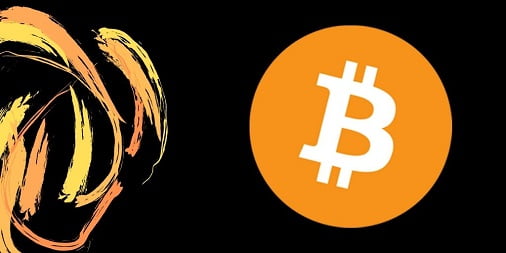The day the last bitcoin miner shuts down is the day humanity triumphs

First, let me confess two things: 1) I love all things bitcoin; 2) I’ve done mining in the past, and I’ll probably do some in the future. A big part of me hates myself for mining bitcoin, though. It’s a financial and technological breakthrough that has the unfortunate side effect of trashing the environment.
One estimate pegs the electricity cost for maintaining the Bitcoin network at $160,000 (USD) per day (per Straight). That’s enough electricity to power my house for more than 300 years!
That’s damn near unconscionable – especially when I feel guilty using a nightlight so my wife can more easily make it down the hallway to feed our baby in the middle of the night. Yet here we are using custom rigs to solve meaningless algorithms. Why don’t we set our laptops to solve Sudoku puzzles or stream soap operas whenever we leave the room?
Bitcoin mining is dead
A growing number of thought leaders in the space have had the courage to voice similar opinions in public. Bitshares founder Daniel Larimer told a roomful of conference-goers at the Inside Bitcoin NY conference earlier this month that his thoughts on mining had evolved and that he believes it’s an “absolute waste of resources.”
Bitshares Marketing Director Brian Page told me he was surprised that no one got upset when Larimer disparaged bitcoin’s wastefulness. “We think mining is dead and is going to go away one day,” Page said. Apparently, others in the bitcoin community agree – even if they aren’t saying it publicly.
The founder of NoFiatCoin agrees wholeheartedly.
“A lot of people are so blindfolded by bitcoin that they won’t say, ‘Let’s figure out a way to make it survive in a better network,’” Robert Reyes told me. “Eventually mining is going to be dead. There are a few of us that have woken up to that reality. Mining is not the future.”
A gnawing problem
Even the bitcoin community itself can’t come up with a great answer to the energy issue. On the bitcoin myths page, the environmental issue gets more space than any other “myth.”
Their counterarguments can be boiled down as follows:
- Mining physical gold and creating fiat currencies are both wasteful, too.
- Mining will move to areas where electricity is cheap, plentiful and renewable.
- Technology could come about that makes mining much cheaper or free.
- Bitcoin’s positive benefits outweigh environmental concerns.
Those are decent arguments except for the fact that they don’t address bitcoin’s artificial difficultly. The vast majority of bitcoin’s power is consumed trying to solve a cryptographic hash that is ultimately meaningless. Processing transactions is a byproduct of that process.
We need to flip that equation on its head for bitcoin mining to ever make sense. Processing transactions should be the primary reason the bitcoin network consumes power. If it isn’t and there simply is no other way to equitably distribute bitcoin without requiring huge amounts of computing power, that computing power should be put to good use.
Mining for good
There are several examples of ways mining power could be put to good use. One of the earliest examples comes to us from Primecoin. Computers in the primecoin network spend the bulk of their time searching for undiscovered prime numbers. That action furthers mathematical research.
Gridcoin incentivizes miners to contribute to scientific research via BOINC (check out my post: EXCLUSIVE: Gridcoin founder talks revolution in mining).
My favorite solution, though, comes from ripple. Ripple relies on a consensus system rather than a proof-of-work network. As a math-based currency, ripple was never mined, but instead the founders came up with ways to distribute the coin (XRP) in exchange for development tasks or (again) contributing to scientific progress via the BOINC network. That means, the network’s computing power was put to use doing things like searching for cures for AIDS and cancer.
Network upgrades at BOINC have lead ripple to pause it’s BOINC giveaway, but before that time, ripple contributors to BOINC comprised the single largest group of BOINC contributors in the network’s history.
“THANK YOU all for participating in Computing for Good,” Ripple’s team wrote last month. “Team Ripple Labs on World Community Grid grew to 22,000 team members, making it the largest team of all time, and generated 36,880 years of run-time – wow, we are so grateful!”
Imagine if all the resources being drained by the bitcoin network could stop wasting power and instead get to work doing something that makes the world a better place.
Projects aiming to destroy the bad effects of mining
Here’s where I’d like to keep a compendium of projects that aim to combat bitcoin’s terrible ecological issues. Please use the comment section below to inform me of new projects.
- Ripple’s Computing for Good (a BOINC contributor)
- Gridcoin (a BOINC contributor)
- Solarcoin (designed to stimulate the production of 97,500 terawatt-hours of solar electricity over the next 40 years)
- Permacredits (powered by the surplus profit-sharing of Eco Developments, Permaculture institutions, and members in the Permacredit network)
Note that coins that rely on algo-based proof-of-work for the majority of their functioning are excluded from this list (even if they’re donating money to worthy causes). Let’s get together and change the bitcoin model dramatically to completely destroy mining!
Relevant news

Top 3 cele mai bune cazinouri din România
Top 3 cele mai bune cazinouri din România Bucurați-vă de numeroase jocuri, bonusuri și opțiuni…

Excellent bitcoin casino gambling pakistan
Excellent Bitcoin Casino Gambling in Pakistan Are you looking for a thrilling and secure way…

Bitcoin casinos Pakistan and crypto casinos Pakistan
Can I safely play Bitcoin casinos Pakistan and crypto casinos Pakistan? As you might imagine,…
Tales of Asgard: Loki’s Fortune slot Play n Go
ABOUT GAME What's the story? A life in Thor’s shadow leaves Loki filled with jealousy. When it comes to the question of who will take their father’s throne, it is Thor or Loki. And we…
Prism of Gems slot
ABOUT GAME PRISM OF GEMS is a 5-reel video slot machine with up to 3087…
Charlie Chance slot
Charlie Chance Unfinished Games If your game round is disrupted, all game information and placed…
